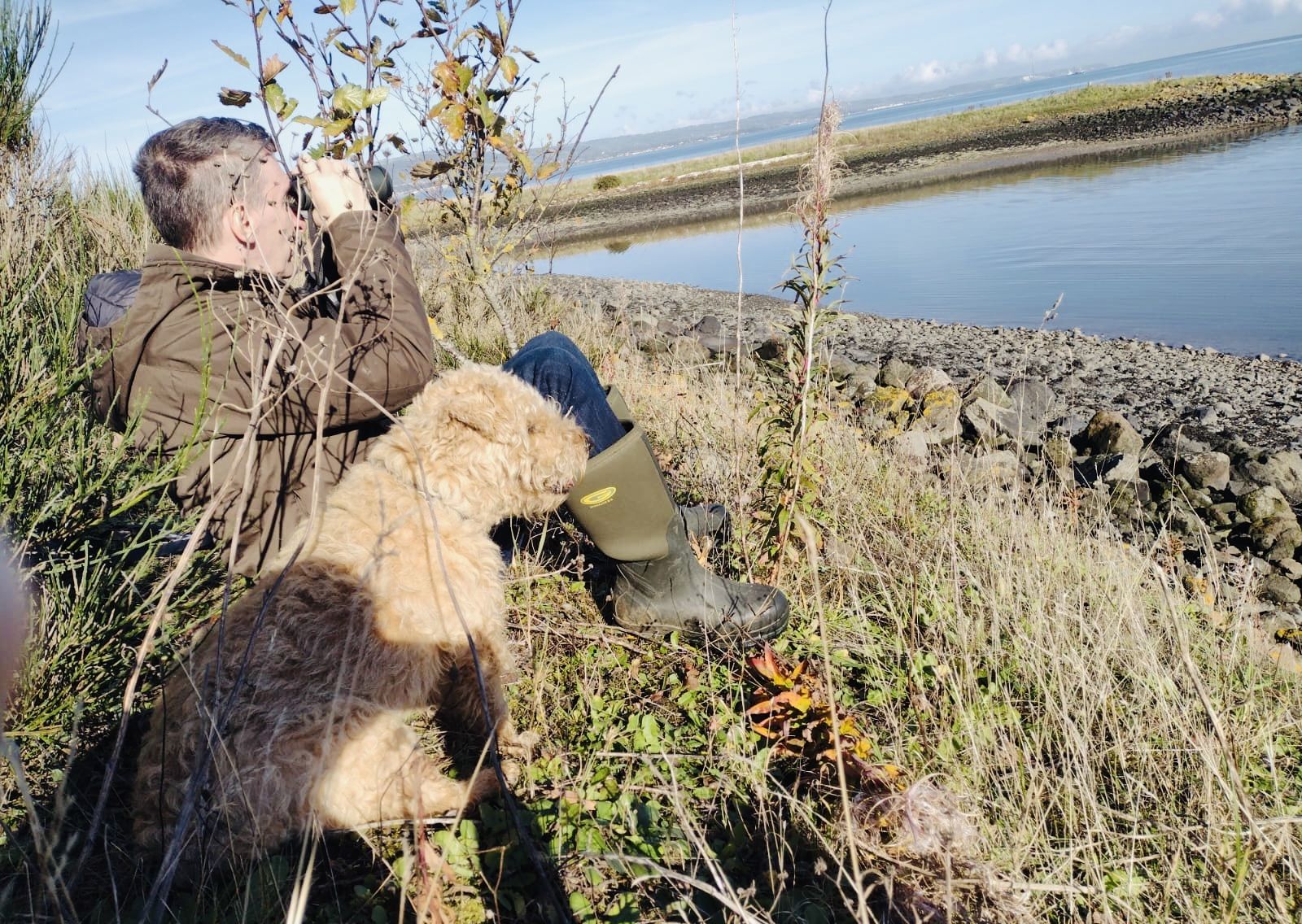AS you can see from this picture, wee Mac enjoys birdwatching as much as Dúlra.
The Lakeland terrier is getting on a bit in years – he’s in double figures – and he’s eased into his twilight years like a pensioner slipping on a pair of slippers.
He’s still got all the faculties that makes him such a special dog – a nose that is many times more useful than his eyes, an infectious energy, and a total and absolute focus on his lifelong foe – the mighty mouse.
But he does like to take a seat now as well, something his younger self would never have done. Every so often he just plonks himself down and watches the world go by, like an oul’ boy on a park bench.
So now when Dúlra stops to focus the bins on a bird, where a while ago Mac would have been darting this way and that on the trail of those tiny pesky foes which are forever beyond his reach, today he just takes his ease and has a look around.
Of course, birds mean about as much to Mac as a brick or a plant. They haven’t been included in his hunting DNA – he’ll walk right past the finches, pigeons and magpies feeding in Dúlra’s garden. The birds will take off in terror – Mac's not much bigger than a large cat– but he’ll barely bat an eyelid at them.
Here’s Mac and Dúlra watching the waders at Belfast Lough this week. It’s incredible what arrives here day after day. On Tuesday, a phalanx of 50 geese arrived, touching down on dry land perhaps for the first time since they left Iceland a thousand miles ago.
A beautiful clear morning @spurnbirdobs @YWT_North on our Spurn Migrants Birding holiday today with a big migration of woodpigeons underway 3000 in 40 mins. & these wonderful whiffling Brent Geese video by @leedsbirder @Markthebirder pic.twitter.com/BB9hyZpPRf
— YorkshireCoastNature (@YCNature) November 2, 2022
But the black and white brent geese – cadhan in Irish – had actually travelled even further than that: an incredible 2,000 more miles more to be precise. Because they come here from, wait for it, the Arctic tundra in northern Canada.
It’s one of the world’s most amazing migration routes yet few if anyone here knows about it. We really should be having a festival in its honour every October when it ends its epic journey.
They love a plant called eelgrass, which grows at the water’s edge. In the 1930s, a collapse of Irish seagrass because of industrial development led to to a serious fall in numbers. More lately, they’ve managed to expand their diet, often munching on ordinary grass, mimicking other species of geese.
This bird is living evidence of the interdependence of our world. No matter how much effort the Canadians put into preserving the world’s 250,000 population of brent geese – a relatively small number, almost all of which breed there before travelling to Ireland – it’ll not count for much unless we have eelgrass to see them through winter.
Dúlra would love to know what Mac was thinking as he gazed out at the vast flocks of seabirds feeding on the mudflats on Tuesday. It looks like he’s really taking a breather, like it was the first time in his whole life he managed not to think about mice.
• If you’ve seen or photographed anything interesting, or have any nature questions, you can text Dúlra on 07801 414804.







